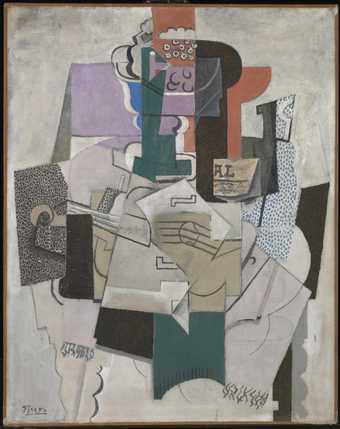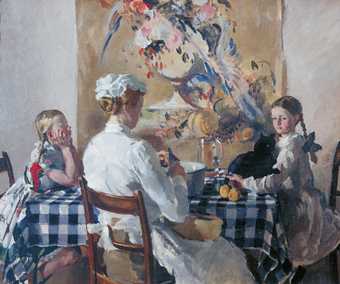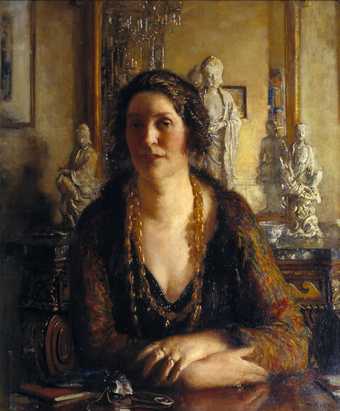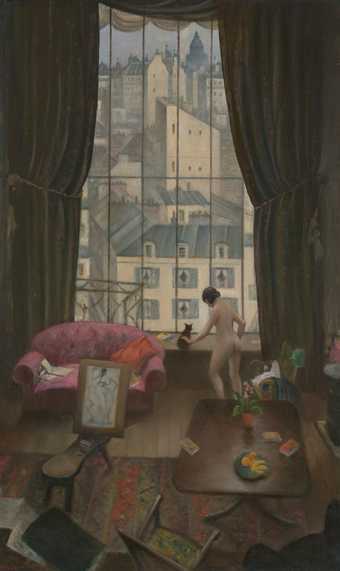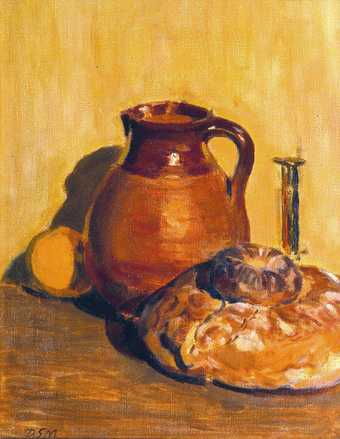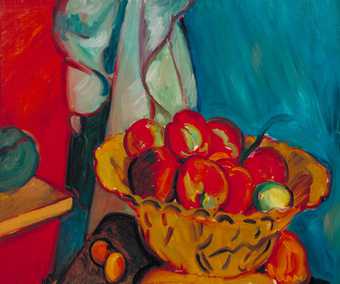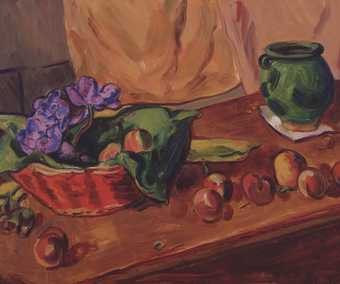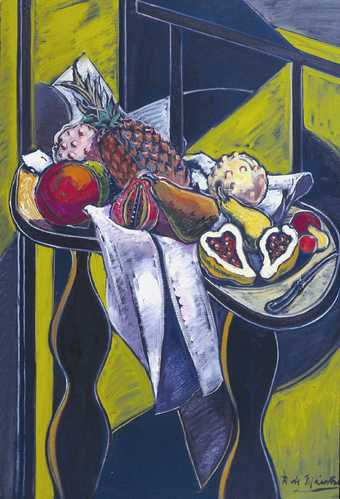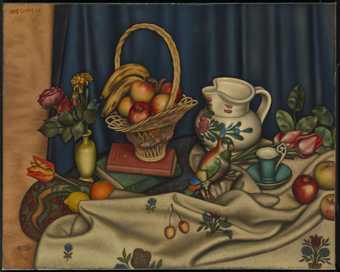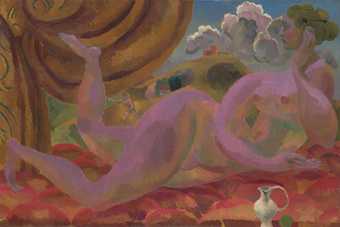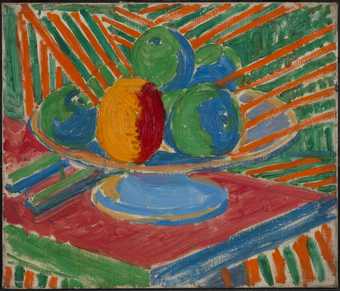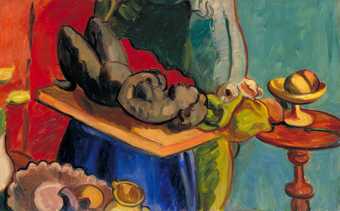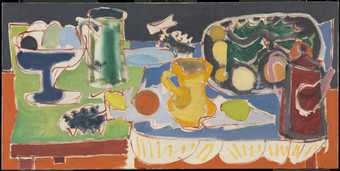
Not on display
- Artist
- John Aldridge 1905–1983
- Medium
- Oil paint on canvas
- Dimensions
- 666 × 817 × 20mm
- Collection
- Tate
- Acquisition
- Purchased 2000
- Reference
- T07626
Summary
John Aldridge is now best remembered for his gentle pastoral landscapes of Great Bardfield, the Essex hamlet where he settled in 1933 and lived for the rest of his life. But in 1931 he was one of the small number of painters invited by Ben Nicholson (1894-1982) to join the avant-garde Seven and Five Society, an exhibiting group through which Nicholson sought to promote modernism in Britain. It was perhaps the spareness and formal rigour of Aldridge's early work that Nicholson admired.
Aldridge painted Head and Fruit in 1930 and sent it to the January 1931 Seven and Five exhibition held at the Leicester Galleries. He continued to exhibit with the group until 1934. The picture's tilted table-top, still life subject and its scrubbed-down paint surface have obvious affinities with Nicholson's own work. But the subject-matter also harked back to somewhat earlier Cubist pictures by Picasso (1881-1973) and Braque (1882-1963), and to still life paintings by Cézanne (1839-1906) and Matisse (1869-1954). These were all artists generally little known in Britain until Roger Fry's influential Second Post-Impressionist Exhibition held in 1912, which caused considerable critical furore in the press. In conservative circles they continued to be viewed with a mixture of derision and suspicion. Aldridge himself is likely to have encountered such works during his visits to France and widespread travels on the Continent in the late 1920s.
Aldridge takes a high viewpoint, looking down on the table as if it is artificially tilted. Behind is a curtain or wall-hanging with a bold, modernist-inspired diamond pattern, while on the far left is what appears to be tongue and groove wall panelling or else a narrow-striped wall paper. The group of fruit includes an aubergine, a moderately exotic presence in inter-war Britain. Most striking of all is the carved head. This is reminiscent of some of the work of the modernist sculptor Ossip Zadkine (1890-1967), who carved primitive-looking heads with similar angular planar surfaces. Aldridge may have seen his work at the 1928 exhibition at Arthur Tooth's in London, or during his Continental travels. But there are also similarities to Head (1930) by Barbara Hepworth (1903-75), who was one of the central figures of the Seven and Five Society. Whether seeing such works inspired Aldridge to carve a similar head for this picture or whether it is the work of somebody else altogether remains unexplained.
Robert Upstone
January 2002
Does this text contain inaccurate information or language that you feel we should improve or change? We would like to hear from you.
Explore
- objects(23,571)
-
- fine arts and music(3,982)
-
- sculpture(693)
- food and drink(980)
-
- fruit - non-specific(173)
- furnishings(3,081)
- vessels and containers(2,157)
-
- bowl(250)
- head / face(2,497)
You might like
-
Pablo Picasso Bowl of Fruit, Violin and Bottle
1914 -
Philip Connard Jane, Evelyn, James and Helen
1913 -
Sir Walter Russell The Amber Beads
exhibited 1926 -
Christopher Richard Wynne Nevinson A Studio in Montparnasse
exhibited 1926 -
Dugald Sutherland Maccoll Crock and Cottage Loaf No. 2
exhibited 1931 -
Sir Matthew Smith Peaches
1937 -
Sir Matthew Smith Still Life
c.1936 -
Roy De Maistre Still Life: Fruit
1954 -
Mark Gertler The Basket of Fruit
1925 -
Duncan Grant Venus and Adonis
c.1919 -
Sir Matthew Smith Fruit in a Dish
c.1915 -
Sir Matthew Smith Still Life with Clay Figure, I
1939 -
Patrick Heron The Long Table with Fruit : 1949
1949

